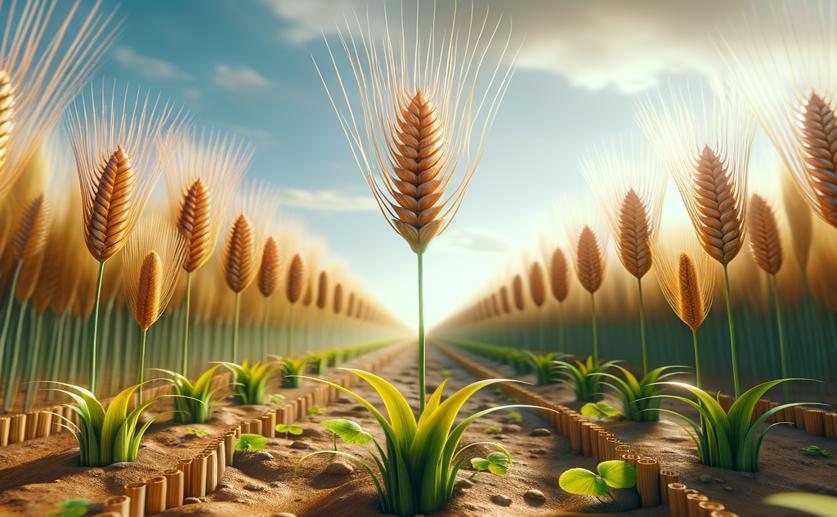
New Genes Found Affecting Barley Stem Length and Plant Height
Jim Crocker
16th June, 2024

Image Source: Natural Science News, 2024
Key Findings
- The study by Qatar University focused on the genetic and phenotypic variation of peduncle length in barley under drought and heat conditions
- Significant natural variation in peduncle length was found among barley accessions from around the world, indicating its importance for adaptation to dry environments
- A genome-wide association study (GWAS) identified 86 marker-trait associations, with five significant markers located on chromosome 3H, highlighting key genetic regions linked to peduncle length
AgricultureGeneticsPlant Science
References
Main Study
1) Discovery of new genomic regions and candidate genes implicated in the natural variation of barley peduncle length and plant height
Published 15th June, 2024
https://doi.org/10.1007/s10722-024-02050-y
Related Studies
2) The Genetic Architecture of Barley Plant Stature.
3) GWAS: Fast-forwarding gene identification and characterization in temperate Cereals: lessons from Barley - A review.
4) Extensive signal integration by the phytohormone protein network.
5) The enclosed and exposed part of the peduncle of wheat (Triticum aestivum) - spatial separation of fructan storage.



 15th June, 2024 | Jenn Hoskins
15th June, 2024 | Jenn Hoskins